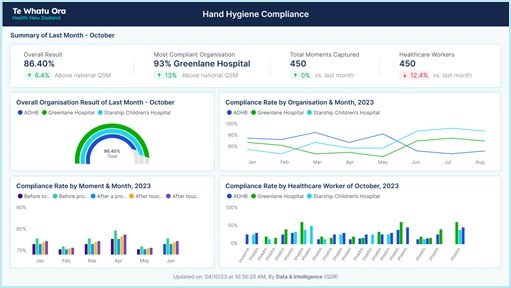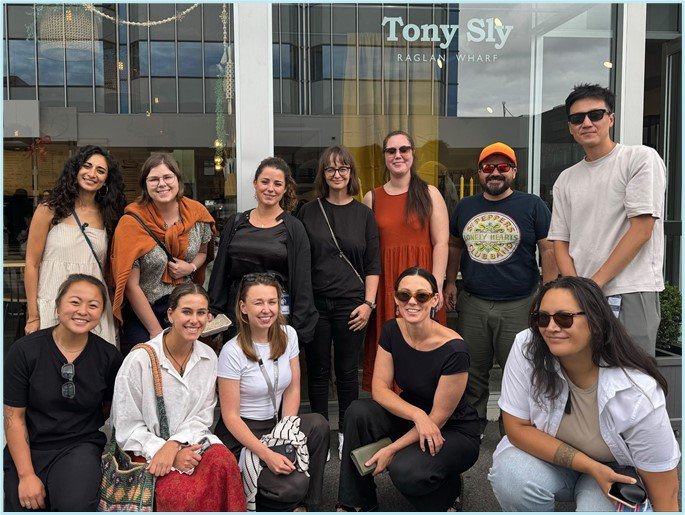Ahakoa He Iti He Pounamu: My Ara Manawa Internship Experience
Ahakoa he iti he pounamu. — “Although it is small, it is precious.”
A whakataukī (traditional Māori proverb/life lesson)
If offered the chance to move halfway across the world for an internship in a completely new field, would you do it? For me, my university empowered me to do just that.
As part of my university’s distinctive quarter system, known as the “D-Plan” (short for Dartmouth Plan), students have the flexibility to take a fall, winter, or spring term “off,” during which most choose to spend time traveling or pursuing an internship (or both!). Inspired by so many of my upperclassmen friends who have had life changing off-term experiences, from conducting ecological research while kayaking the entirety of the Murray River in Australia to participating in arctic field studies in Iceland, Norway, and the Finnish Laplands, I became determined to embark on my own epic adventure in the form of an international design internship. After researching Dartmouth’s many funding opportunities, I chose to apply through the Dickey Center for International Understanding, which supports international internships in any field of study.
With this funding, I worked as Ara Manawa’s sixth-ever intern and first UX design intern. While I had a strong academic background in UX design from my university coursework and a year of professional experience as a UX designer at Dartmouth's Digital Applied Learning and Innovation (DALI) Lab, I had never before ventured into the world of healthcare or engaged with stakeholders outside of Dartmouth. Lasting 7 weeks from January to February 2024, my internship at Ara Manawa served as the perfect way to bridge these gaps and explore the unfamiliar but increasingly important field of healthcare through a design lens.
Exploring a variety of design projects
On my first day of work, I arrived at Studio 160—Ara Manawa’s on-site office—full of excitement and a million questions: Who was I going to meet? What impact could I make? Would healthcare design work be what I had hoped it to be?
In addition to assisting my colleagues with various tasks, ranging from content redesigns to usability testing to interview transcriptions, I quickly became involved in two main projects, one focused on UX design and the other on experience design:
Developing Power BI implementation guidelines for a Figma design system aimed at standardizing the look of reports across all Te Toka Tumai Auckland data teams.
Contributing to the initial scoping and research phase of a project focused on reducing disproportionate patient restraint incidents among Māori demographics in Te Toka Tumai Auckland's Emergency Department (ED) through enhancing cultural safety.ce here.
One screen of the Figma design system, built around an example report (Hand Hygiene Compliance), that needed to be translated into the Power BI implementation guidelines document.
For the Power BI implementation guidelines document, I immersed myself in both Miro and Figma, utilizing these applications for ideation surrounding industry research into existing design guidelines frameworks and actually building the document, respectively. Under the guidance of my project mentor and supervisor, Senior UX Designer Deepa Swami, I dedicated myself to learning all the ins and outs of the existing Figma design system she had already researched and designed. I engaged with data teams to discern their specific needs and requirements, facilitating the creation of a comprehensive handover document that outlined everything necessary for a smooth implementation process.
What I found most rewarding about this project, which essentially defined my time at Ara Manawa, was the opportunity to collaborate with an experienced designer while also having the freedom to steer the direction and progression of the document. Despite facing communication challenges and the potential for misunderstandings along the way, the invaluable support I received through regular check-ins with Deepa and the Data Visualization project team was instrumental. I'm hopeful that these experiences have equipped me with effective strategies for navigating similar situations and improving clarity in future projects.
Two pages from the finalized Power BI implementation guidelines document for Ara Manawa’s Data Visualization project.
For the patient restraint elimination project, I had the opportunity to collaborate with Principal Design Strategist Sarv Taherian, Senior Product Design Engineer Kylie Clampitt, and Senior Spatial Designer Iuliia Sankova. From the very beginning of the project, which kicked off a few weeks into my time at Ara Manawa, we met with our project sponsor to understand their needs and gather information on contacts at Te Toka Tumai Auckland. Once our project was given the green light, we focused on setting priorities and delving into existing research on racial disparities in the use of patient restraint in EDs. This immersive experience equipped me with invaluable insights into project scoping dynamics, real-world partner communication, and the logistical essentials for launching a project. Additionally, I loved that I could apply familiar research methodologies from my work with the DALI Lab, but on a larger scale and with greater emphasis on cultural sensitivity.
Miro board capturing project scoping notes for Ara Manawa’s Patient Restraint Elimination project.
Building relationships with the team
From the moment I started at Ara Manawa, I knew I wanted to get to know each team member better beyond just work. So, I initiated short, 15-minute chats with everyone, where I learned about their unique life stories, career paths, and asked them to share their one piece of advice for success. Whether it was taking a quick walk around "The Loop" near the office or grabbing a coffee at New Zealand Coffee Co—Studio 160’s favorite spot—I made sure to engage with each of my colleagues individually. Given the diverse range of design roles at Ara Manawa, spanning from UX to visual to spatial to experience, I was eager to learn from everyone, not just those in UX roles. My overarching goal was to leave these 7 weeks having made a valuable impact, while also gathering actionable insights to bolster my chances of success in my own career journey. These conversations not only sharpened my design skills but also made me feel more genuinely connected to the team at Ara Manawa, instilling in me the confidence to thrive in whatever new environment I find myself in next.
Group photo taken during my goodbye lunch with 11 out of the 16 Ara Manawa team members.
One piece of advice from each of my colleagues (and myself)
For future design interns, or anyone preparing for an internship (in that case, adapt this advice to your field), here’s what my 16 colleagues (and I, after reflecting on my internship) have to say about how to be successful:
Jodi — Think of yourself as a designer who can hold multiple roles. Your job title does not define exactly what you can offer.
Emma — Incorporate your unique and unconventional life experiences into your resume/CV to showcase your humanity and better stand out.
Sarv — Simply being likable and engaging with people can open doors to opportunities.
Kylie — Be a specialist but a generalist. Strive to specialize in your field while maintaining a broad range of skills and knowledge.
Iuliia — Explore various job opportunities throughout your early career to broaden your experiences, expand your network, and increase your earning potential.
Deepa — Speak up about your interests and preferences for getting involved with projects to ensure they align with your goals and provide what you are looking for in the long run.
Melody — Leverage your connections everywhere you go to uncover opportunities you may never have known about, which could turn out to be a perfect fit for you.
Livvy — Learn to be comfortable being uncomfortable. You never stop learning throughout your career.
Howie — Always uphold your design values and personality in your work. You can always find a way to strike a balance between these and the demands of your job or project.
Natalie — Things won't happen unless you take action. If you want something, don't hesitate and just go for it.
Nico — Explore both research- and execution-focused roles to determine which you like better, then commit to one.
Elina — Think of networking as making friends rather than just trying to find a job.
Nicola — Don’t be afraid to seize opportunities and take leaps around the world. Sometimes, opportunities are not obvious, but by reaching out, you create them for yourself.
Robyn — You can infuse art and creativity into anything you do. Find the fun in this!
Jenna — Look to find joy in whatever you are doing and let this guide your path.
Charlotte — Find a balance between working with more experienced individuals and working alone. Learning from others is crucial, but working independently also hones your decision-making skills.
Myself — Believe in yourself. You're more capable than you realize.
Reflecting on my internship, the girl who walked into Studio 160 on her first day of work could never have imagined discovering such self-confidence in both herself and her design skills. I feel incredibly lucky to have been able to engage in career conversations and collaborate with a team of such remarkably diverse, passionate, and dedicated individuals. Through both direct insights into their lives and the natural time we spent together, I’ve felt a profound sense of belonging and personal growth at Ara Manawa. I’m immensely grateful for the opportunity to handle multiple projects simultaneously, elevate my presentation skills through meetings with my teams and partners, and contribute to projects with a profound social impact that extends far beyond the Dartmouth community.
Ngā mihi nui,
Summer
February 2024
THANKS TO
Thank you to everyone who contributed to making this internship experience possible and joyful:
Deepa Swami, my mentor and supervisor on the development of the Power BI implementation guidelines document, for her invaluable feedback and direction, which helped me enhance my design skills and navigate the post-design/handoff phase for the first time.
Claire Jackson, Haiyao Huang, + Feifei Song, members of the Data Visualization project team and target users of the Power BI implementation guidelines document, for their invaluable feedback throughout the iterations of the document.
Sarv Taherian, Kylie Clampitt, + Iuliia Sankova, my team members on the patient restraint elimination project, for welcoming me into their team and allowing me to play a role in overseeing the project’s scope and conducting initial research.
Emma Wylie + Sarv Taherian, for working to onboard me and facilitating my integration into team projects, making everything achievable.
The entire Ara Manawa team for openly sharing their career journeys with me and quickly becoming not just my colleagues, but my work whānau.
The Studio 160 dogs for never failing to brighten my day.
The baristas at New Zealand Coffee Co for making me a killer iced coconut latte every day and never failing to remember my savory pastry order, all while being the kindest humans ever.
Dartmouth’s Dickey Center for International Understanding (particularly Global Studies Program Manager Peter Jenkinson) for their guidance and financial support for my living expenses in New Zealand.
AUTHOR
Summer Hargrave — UX Design Intern at Ara Manawa, Undergraduate Student at Dartmouth College





